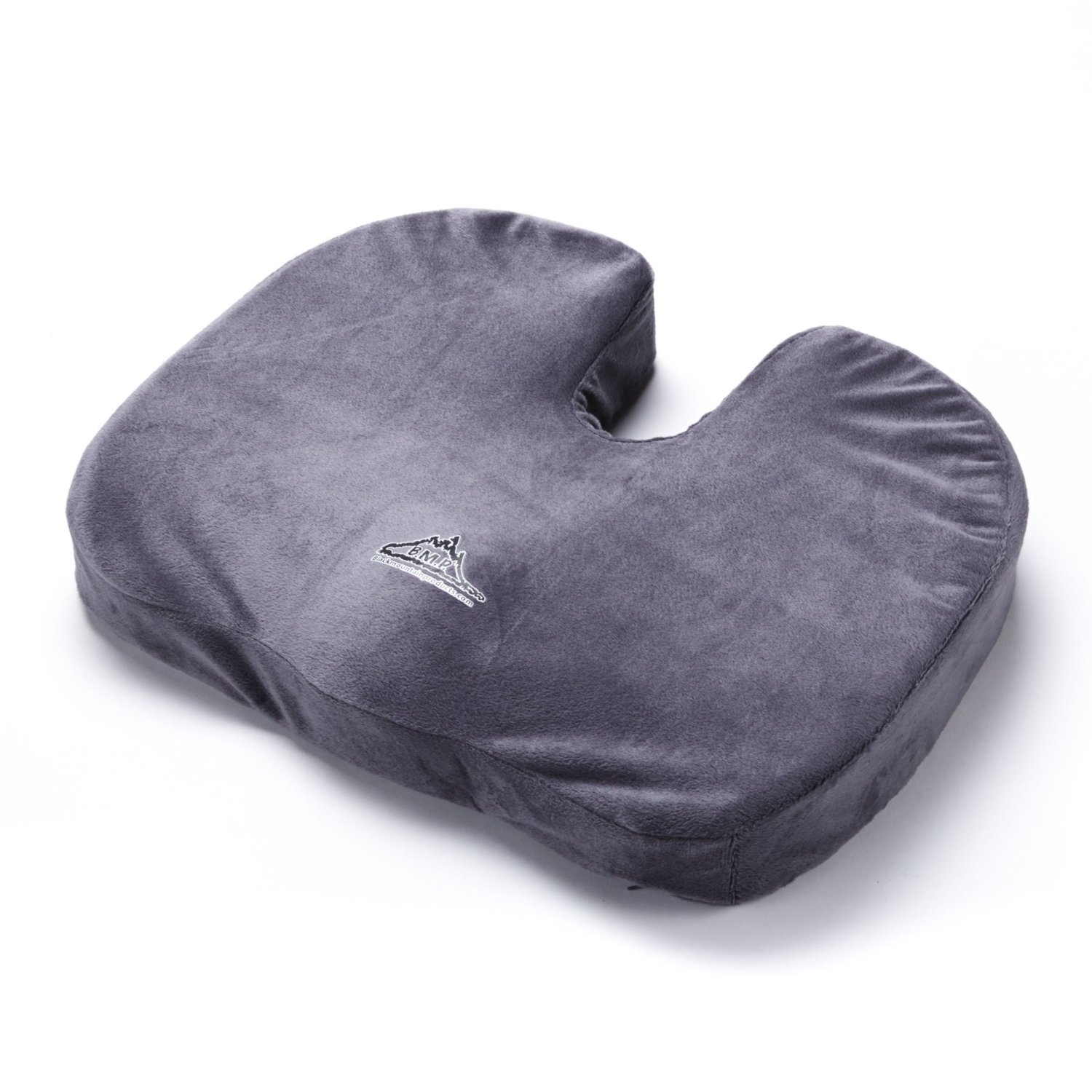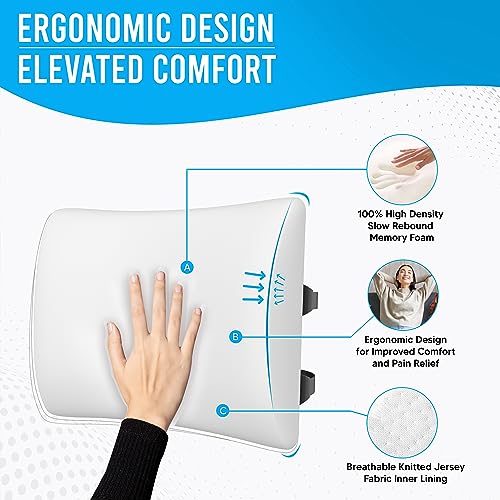The Importance of Proper Alignment and Balance
In today's fast-paced world, we spend a significant amount of time sitting - whether it be at work, in the car, or relaxing at home. However, this sedentary lifestyle can have negative consequences on our health, particularly on our musculoskeletal system.
Prolonged periods of sitting can cause muscle imbalances, leading to discomfort, pain, and even chronic conditions such as lower back pain and sciatica. Our bodies are designed for movement, and spending extended hours sitting goes against its natural state. Therefore, it is crucial to take necessary measures to maintain proper alignment and balance while sitting. One effective way to achieve this is by using a seat cushion.
What is a Seat Cushion?

A seat cushion is a soft, comfortable pad that is placed on a chair or seat to provide support and comfort while sitting. It is typically made with foam, gel, or memory foam material and comes in various shapes, sizes, and designs.
Seat cushions serve as a supportive layer between our body and the surface of the chair, reducing the pressure exerted on vital areas such as the hips, tailbone, and spine. It can help distribute weight evenly and promote proper posture, ultimately enhancing alignment and balance.
How Does a Seat Cushion Help Maintain Proper Alignment and Balance?

The average person spends about 13 hours a day sitting, which can take a toll on their body. Prolonged sitting can lead to poor posture, muscle fatigue, and discomfort. This is where a seat cushion comes into play.
A well-designed seat cushion can distribute weight evenly, reducing pressure points and preventing muscle fatigue. Its ergonomic contours can also provide support for the lumbar region, promoting proper spinal alignment and preventing slouching. Additionally, some seat cushions incorporate features that stabilize the pelvis, reducing imbalances and preventing undue stress on the hips and lower back.
By promoting proper posture and providing support, a seat cushion can enhance balance while sitting. This is especially beneficial for individuals who may have difficulty maintaining balance due to age or physical limitations, reducing the risk of falls.
Benefits of Using a Seat Cushion

The use of seat cushions has been proven to provide numerous benefits for our overall well-being. Some of these include:
- Alleviates pain and discomfort: By reducing pressure points and promoting proper alignment, seat cushions can alleviate pain and discomfort associated with prolonged sitting.
- Prevents muscle imbalances: Prolonged sitting can cause muscle imbalances, leading to pain and discomfort. A seat cushion provides support and helps distribute weight evenly, preventing muscle fatigue and imbalances.
- Enhances posture: A seat cushion's ergonomic design can help maintain proper spinal alignment, preventing slouching and promoting good posture.
- Increases comfort: Sitting on a hard surface for long periods can result in discomfort and pain. A seat cushion adds a layer of softness and comfort, making sitting more enjoyable.
- Promotes circulation: The even distribution of weight provided by a seat cushion can improve blood flow and circulation, reducing the risk of developing deep vein thrombosis (DVT).
- Supports injury recovery: For individuals recovering from injuries or surgeries, a seat cushion can provide the necessary support and comfort to aid in their healing process.
Choosing the Right Seat Cushion

With the myriad of seat cushions available in the market, choosing the right one can be overwhelming. Here are some factors you should consider when selecting a seat cushion:
Types of Seat Cushions Available
Seat cushions come in various types, each designed to cater to different needs and preferences. These include:
- Foam cushions: These are the most common type of seat cushions and are made with high-density foam. They provide a firm and supportive base for individuals who require additional support.
- Gel cushions: Gel cushions are made with a layer of gel placed on top of foam or memory foam material. They provide excellent pressure relief and are suitable for individuals with chronic pain or injuries.
- Inflatable cushions: As the name suggests, these seat cushions can be inflated to the desired level of firmness. They are lightweight and portable, making them ideal for travel.
- Memory foam cushions: These are made with viscoelastic foam that conforms to the shape of the body, providing personalized support and comfort.
- Wedge cushions: Wedge cushions are triangular in shape and are designed to tilt the pelvis slightly forward, promoting proper alignment and reducing pressure on the lower back.
Factors to Consider When Choosing a Seat Cushion
When selecting a seat cushion, it is essential to consider the following factors:
- Material: The material used to make the cushion will determine its firmness, support, and durability. Choose a material that suits your preferences and needs.
- Size and Shape: Seat cushions come in various shapes and sizes, and it is crucial to choose one that fits your chair or seat comfortably.
- Thickness: Thicker cushions provide more support, while thinner ones offer more portability. Consider your needs when selecting the thickness of a seat cushion.
- Cover: Some seat cushions come with removable covers that are machine washable, making it easier to maintain and keep clean.
- Price: Seat cushions come at different price points, and it is essential to consider your budget when making a purchase.
Proper Usage of a Seat Cushion

Using a seat cushion correctly is vital in achieving its full potential. Here are some tips for proper usage:
- Place the cushion towards the back of your seat, ensuring it supports your tailbone and hips.
- Sit all the way back into the cushion so that your entire back receives support.
- Make sure the cushion is centered and aligned with your spine.
- Adjust the cushion if needed to find the most comfortable and supportive position.
- Avoid slouching or leaning too far back, as this can negate the cushion's benefits.
Caring for and Maintaining Your Seat Cushion
Proper care and maintenance of your seat cushion can help prolong its lifespan and ensure optimal functionality. Here are some tips to keep in mind:
- Follow the manufacturer's instructions for cleaning and maintaining your seat cushion.
- If your cushion comes with a removable cover, make sure to wash it regularly according to the instructions.
- Air out your cushion regularly to prevent odors and bacteria from building up.
- Avoid exposing your cushion to direct sunlight or extreme temperatures to prevent damage.
Alternatives to Seat Cushions
While seat cushions provide an excellent solution for improving alignment and balance while sitting, there are other alternatives that individuals can consider. These include:
- Ergonomic chairs: Investing in an ergonomic chair with built-in lumbar support and adjustable features can help maintain proper alignment and balance while sitting.
- Standing desks: For those who spend a significant amount of time working at a desk, a standing desk can be a great alternative to prolonged sitting.
- Regular breaks: Taking short breaks to stretch and move around while sitting can help prevent muscle imbalances and promote blood circulation.
Conclusion
In conclusion, seat cushions are a valuable tool for promoting proper alignment and balance while sitting. With its numerous benefits and various types available, it is essential to choose a seat cushion that suits your needs and preferences. Remember to use it correctly, care for it properly, and take regular breaks from sitting to maintain a healthy and balanced lifestyle.



